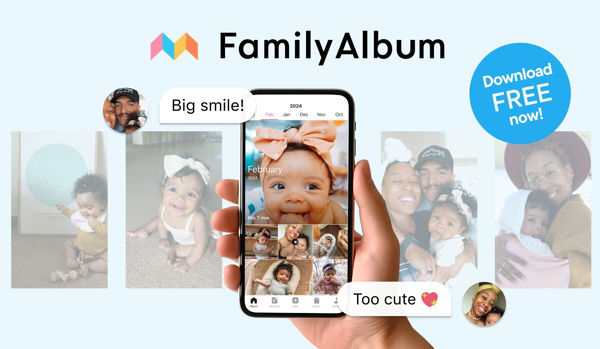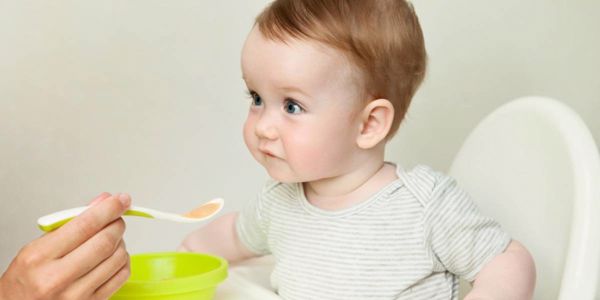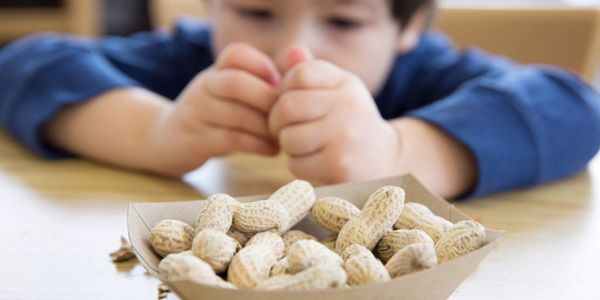Seeing your baby injured or unresponsive can be extremely scary, particularly as they’re so small, so you may feel anxious about performing any first aid on them.
Even something as simple as a slap on the back can save their life. In the event of an emergency, call 999 immediately and keep them on the phone while you perform some of the basic first aid recommended for under 12-month-olds. They can help guide you through it and give you updates on the ambulance’s location.
When They’re Unresponsive
If your baby is unresponsive, tap them on the foot and call out their name. Never shake a baby. Call 999 or 112 immediately. If still unresponsive, you need to check they are breathing. To do this, put two fingers on their forehead and one below their chin and gently tilt their head back. This opens their airway and allows you to bring your ear to their mouth to listen for breathing. Wait 10 seconds.
If they are still not breathing, begin CPR resuscitation until the ambulance crew arrive. If they are breathing, but not responsive, put them in the recovery position and wait for the ambulance.
Recovery Position
If they’re unconscious, but breathing, put them in the recovery position.
For a baby, this involves cradling them in your arms with their head tilted downwards, towards your elbow and their body facing towards you. Keep checking their breathing and pulse until the ambulance arrives.
Resuscitation
As with checking their airway, tilt your baby's head back and take a small breath. Place your lips wide over their mouth and nose to form a seal. Blow very softly for one second until you to see their chest rise. Allow it to fall again and repeat 5 times.
This should be quickly followed by 30 chest pumps. For an infant, you should place two fingers in the center of their chest over the breastbone. Press down one third of the baby’s chest depth and release, allowing the chest to rise. Repeat 30 pumps quite quickly - about two per second (Sing Bee Gees’ Stayin’ Alive if you need a rhythm to stick to). Keep your other hand on the baby’s tilted head to keep their airway open.
Give 2 more rescue breaths and repeat 30 pumps, followed by 2 breaths, until an ambulance arrives, or your baby becomes responsive.
Choking
A choking baby can send a mad wave of panic through you, but it’s important to act quickly. You can usually tell when a baby is choking as they will be unable to cry, cough, or breathe, or they'll have a puffy, red face. If you can see the obstruction, and you are able to pincer it out with two fingers, do so. If not, do not attempt to remove it. Instead, slap it out.
Lay your baby face-down over your thigh, supporting their head with your hand with their bottom higher than their head. Give them five blows firmly on their back using the heel of one hand between their shoulder blades. If back blows do not clear the blockage, turn them over and give up to five chest thrusts with two fingers, whilst supporting their head. Check their mouth each time. If it still does not dislodge the blockage, call 999 and repeat the cycles on their back and chest until it dislodges, they become unresponsive, or until paramedics arrive. If your baby becomes unresponsive, start CPR.
Burns
If your baby gets burned or scalded, put the burn under cool running water for a minimum of 20 minutes. Once the 20 minutes are up, take off any tight clothes to prevent fabric sticking to the burn and cover it loosely with cling film to prevent infection. Do not wrap the area as it needs room to swell. A piece of cling film over the area will be fine. If the burn is on a foot or hand, a clean plastic bag will suffice. Do not use any creams, ice, oils or gels on the burn or break any blisters the burn may have caused. Take your baby straight to A&E. If your baby has burned through clothing, try not to take this off them as peeling off the fabric could peel off skin. Cool under water for 20 minutes and take them to hospital where the medical staff can decide what course of action to take.
Fevers
A fever in babies is when their temperature exceeds 38°C. Fevers are the body’s instinct to fight off infection, however, a very high temperature can lead to seizures, so you need to act quickly to bring it down.
The first point of call is a cool sponge to bring their body temperature down. Try giving them a sip of cold water and the correct dose of baby ibuprofen or paracetamol should also help. Try putting them in front of a fan and removing some layers of clothing, as this too can help bring down their temperature rapidly. If it is still not settling, call the doctor or take them to A&E.
Meningitis
Under 5s are most at risk and can deteriorate very quickly with meningitis, so it's important to know what to look for and call 999 or take them to the hospital urgently if you think they may have it.
Symptoms to look out for:
- A high temperature
- Flu-like symptoms and feeling unwell
- Pale, blotchy skin
- Cold hands and feet
- Pain in their limbs and joints
- Not every child will experience every symptom and if the illness has progressed, they may also be suffering from:
- Severe headaches and neck stiffness.
- Vomiting and drowsiness.
- Light sensitivity.
- Floppiness and bulging soft spot (the 'fontanelle').
The last to show up is a rash consisting of red or purple spots that won't fade or disappear when you roll a glass over them. Until help arrives, please keep your child as cool as possible and treat their temperature with either paracetamol or ibuprofen.
Whilst these are just a few of the emergency situations your child may face, there are many other hazards in the home and just as many ways to treat them. You can buy baby first aid kits online and take a basic first aid course as part of your antenatal classes or separately too.
If you want to be confident to manage most first aid events, your best bet is to attend Let's Talk Birth and Baby First Aid Class with The Honest Midwife.







